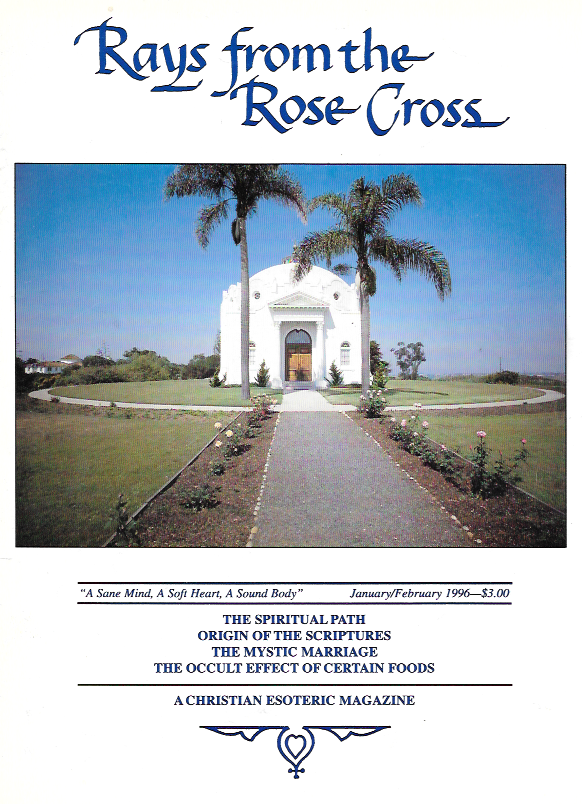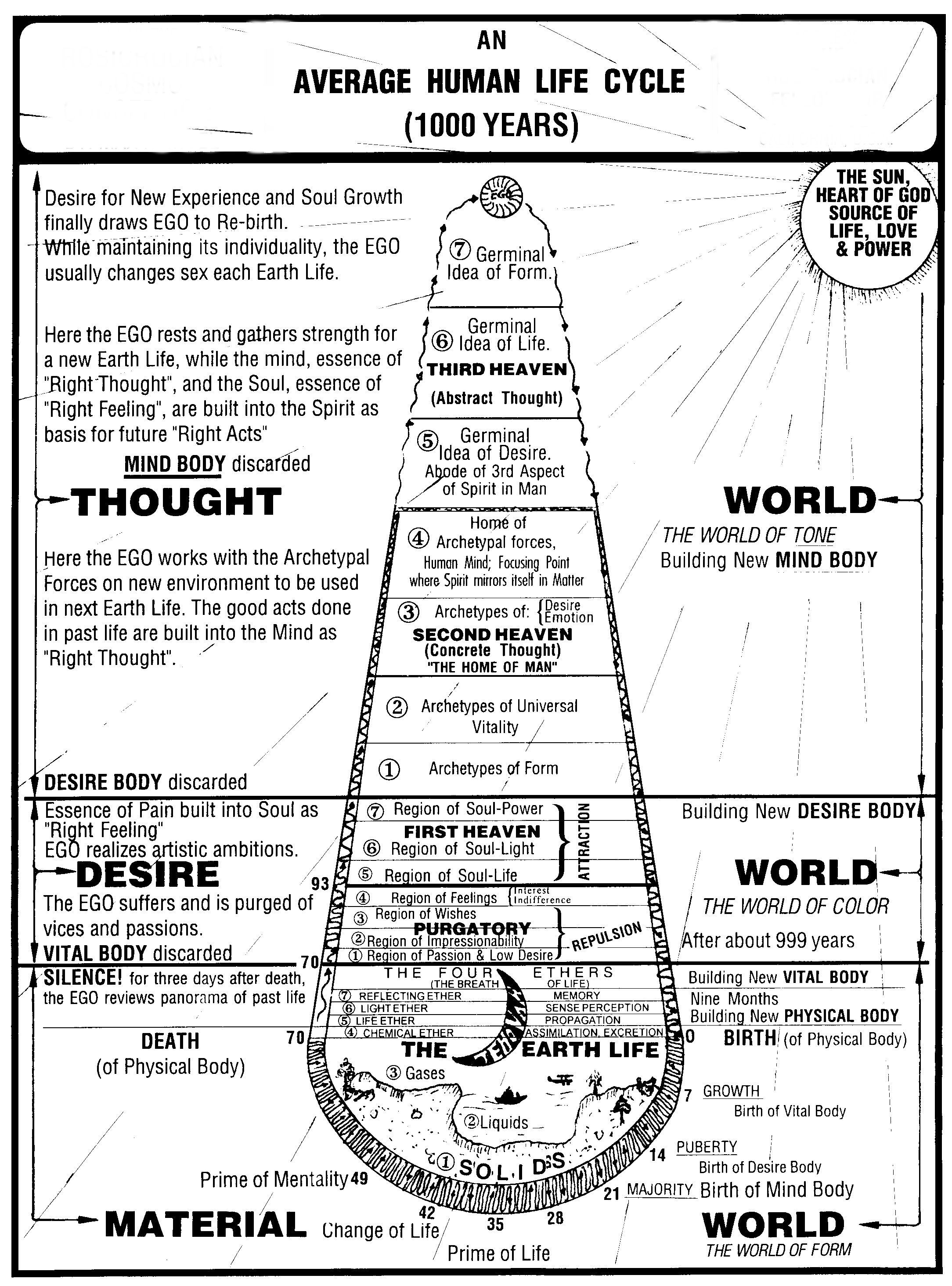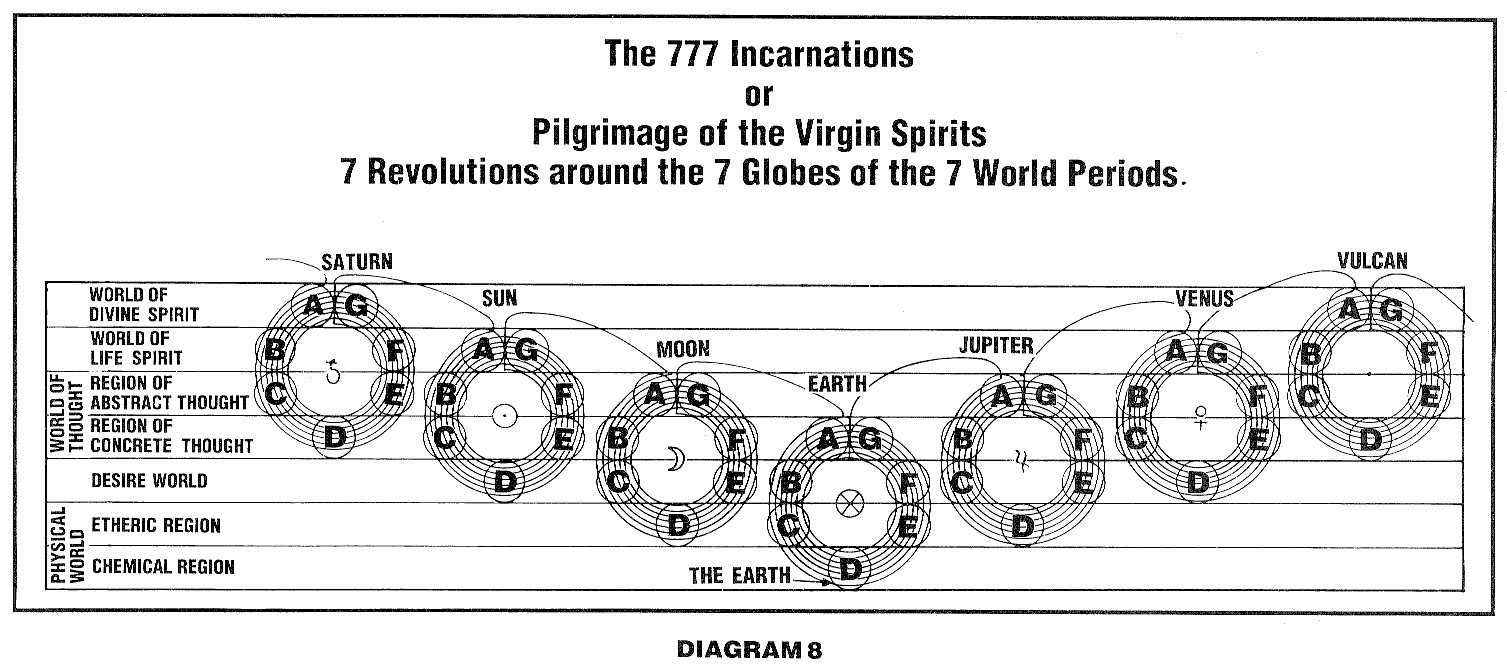
| rosanista.net | ||
| Simplified Scientific Christianity |

Question: What is the essence or particular teaching of real Christianity? (Vol. II, #89)
Answer: In the opening chapters of the Bible we find a commandment given to infant humanity, who had been permitted the freedom of the Garden of Eden, a state of bliss. Only one restriction was placed upon them, viz., "of the Tree of Knowledge thou shalt not eat." When we analyze this command in the light of such sentences as, "Adam knew Eve and she bore Cain"; "Adam knew Eve and she bore Seth"; and Mary's question, "How shall I conceive seeing I know not a man?" we readily understand that humanity was prohibited from indulging the passional nature. The esoteric teaching supplies us with a further knowledge that this function was exercised only at certain times of the year under the guidance of the angels, when the interplanetary lines of force were propitious, and consequently, parturition was painless.
In view of this knowledge we can also understand the so-called curse, "in pain shalt thou bear thy children," the reason being that the procreative act is undertaken at times when the planetary vibrations are not suited to this purpose. Thus sin or the transgression of cosmic law entered into the world and has caused untold trouble. To correct this the religion of Jehovah was given to mankind. This is a religion of law, prescribing penalties for transgressions and putting the fear of the law against the desires of the flesh. We are told that the law was a taskmaster to bring mankind to Christ. However, man rebelled against it all the time, and it required the most severe visitations to keep them anywhere near the line of moral conduct desired. Under this regime of Jehovah mankind was divided into nations which were used to punish one another for their transgressions by war and pestilence. They were also used as clubs to secure obedience, and the Old Testament closes with a promise to the battered and bleeding nations that, "the Sun of Righteousness shall arise with healing in its wings." Then comes the Religion of Christ and the angelic message which heralded the birth, "on Earth peace, and among men good will." This is in the beginning of the New Testament. At the end is a vision of the consummation, when all nations shall flock to a heavenly city where lust and passion have no place — where there is no marriage because death has ceased to make the birth of bodies necessary, where peace and true love reign, where the perfect love inculcated by the religion of Christ has cast out the fear engendered under the religion of Jehovah.
Thus the essence of the Christian teaching is that the law of sin and death may be overcome by love, which will restore immortality.
Question: If Christ was divine and an Archangel, the highest Initiate of the Sun Period, as you say, why then was He called, "The Son of Man?" (Vol. II, #92)
Answer: To understand properly this title: "The Son of Man," it is necessary to know the Masonic legend of the creation of the world and man upon it, as well as the Biblical story. The more salient features of it are as follows:
In the beginning the Elohim Jehovah, created Eve, and the Elohim Samael, who is the ambassador of Mars to this Earth, united with her. Cain was the offspring of this union. Afterward the Elohim Jehovah also created Adam, and Adam united with Eve, with the result that Abel was born. Thus Abel was the son of human parents, both of them creatures of Jehovah, and he was docile, amenable to the commands of the God who was regarded as his Creator; whereas, Cain was the semi-divine offspring of a human mother and a divine father. On that account he had the inherent divine urge to create. Abel was therefore content to tend the flocks, also created by Jehovah, which, like himself, fed upon the plant food that grew wild without effort on his part, a gift of the gods. Cain was different. In him that dominant desire to create something new, that divine urge to make two blades of grass grow where formerly there was one, was a dominant, compelling power, and he could not be satisfied until he had achieved something by his own initiative. He therefore planted the seeds which he found, caused grain to grow, and offered to Jehovah the work of his hands.
However, his offerings were not pleasing to the God Jehovah, who saw in him a possible rival—one not to be entirely dominated. As a consequence there was war between Cain and Abel, and their blood was shed. Then Adam again united with Eve, and from this union Seth was born. Since then there has always been in the world two classes of people: the Sons of Cain and the Sons of Seth. From one was born the long line of kings, which held their office "by the Grace of God," and which culminated in Solomon. This line is the son of men. That is to say, they were born of a human father and a human mother; namely, Adam and Eve, both created by God and amenable to His dictates—both of them thoroughly and entirely human. In this respect the Sons of Seth differ radically, very radically from the Sons of Cain. Cain was virtually the son of a widow, because Eve had been left by her divine husband, Samael, at the moment fertilization was accomplished. He had never taken the part of a husband or a father, therefore, his offspring was as said, the son of a widow.
From this semi-divine progeny, Cain, there has descended a long line of sons who have originated all the industries, as you will see by consulting the Bible. They invented all the arts and all the sciences. To them all the material progress of the world has been due, and their line culminated at the time when Solomon, the son of man, sat upon the throne of Israel, in the birth of a son of a widow, called Hiram Abiff, which you will also find chronicled in the Bible. I (Max Heindel) do not mean Hiram of Tyre, but Hiram, the master workman, who was sent by King Hiram of Tyre to build the Temple of Solomon. He, then, was "the widow's son," and Solomon was the "son of man." At a later time both of these characters in the world drama were reborn. Solomon became Jesus of Nazareth, the Son of Man; Hiram Abiff became Lazarus. He was also the Widow's Son of Nain, and the two resurrections recorded are one event, referring to Initiation.
Since then these two characters, the Son of Man and the Son of a Widow, have worked for the same ends, but in different spheres. Jesus, the son of Man, has worked among the churches, and is doing so still. Christian Rosenkreuz is the later name of Hiram Abiff and Lazarus, the Son of a Widow. Jesus, the Son of Man, stands as the genius and protector of all church craft, whereby religion is fostered and man is brought back to God along the heart path of Devotion. Christian Rosenkreuz, the Son of the Widow, works with the world powers, the industries, and science, in order to bring about the union of the temporal and spiritual power, the head and the heart, which must take place before Christ, the Son of God, can come again.
By the way, about this union, I (Max Heindel) wrote previously that the second coming of Christ would take place at a time when the State and the Church had been united, but that was not exactly a happy expression to use. You will remember that the teachings were given to me in Germany, and in such volume that it was very difficult to find the proper English expression for everything right off. I therefore occasionally translated too literally. The words state and church, as used by the Teacher, were meant to convey the idea that at some time the temporal and ecclesiastical power must work hand in hand and become more and more united; for at the time toward which we are looking, the Kingdom of Christ, there shall be only one ruler. He will then be both King and Priest, and therefore, naturally, the human race must be educated to such a point where their human rulers approach that ideal more and more, being wise enough to rule a state, and good enough to guide the hearts of men. Thus and thus alone can we approach the Kingdom of God, and that therefore, is the condition which Christian Rosenkreuz and Jesus are now endeavoring to bring about in the church and state.
— This article was adapted from "The Rosicrucian Philosophy in Questions and Answers, Vol. II," by Max Heindel.

|

|

|
|
|
Contemporary Mystic Christianity |
|
|
This web page has been edited and/or excerpted from reference material, has been modified from its original version, and is in conformance with the web host's Members Terms & Conditions. This website is offered to the public by students of The Rosicrucian Teachings, and has no official affiliation with any organization. | Mobile Version | |
|